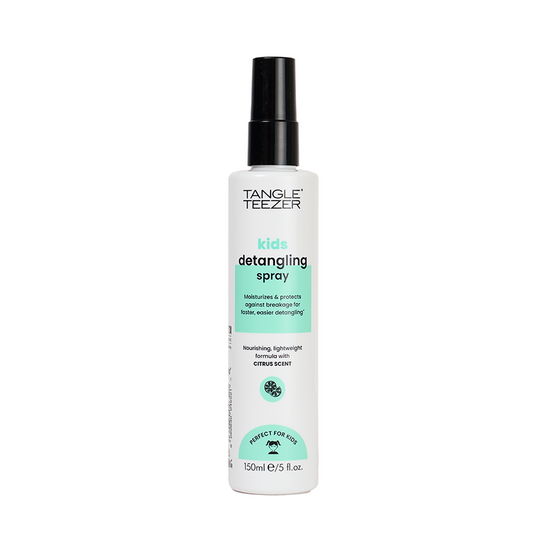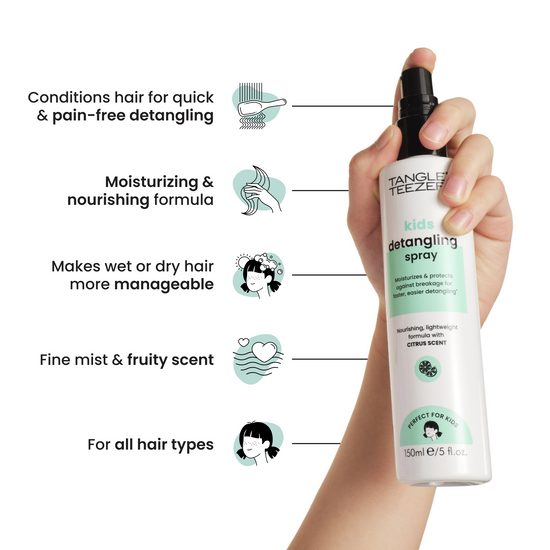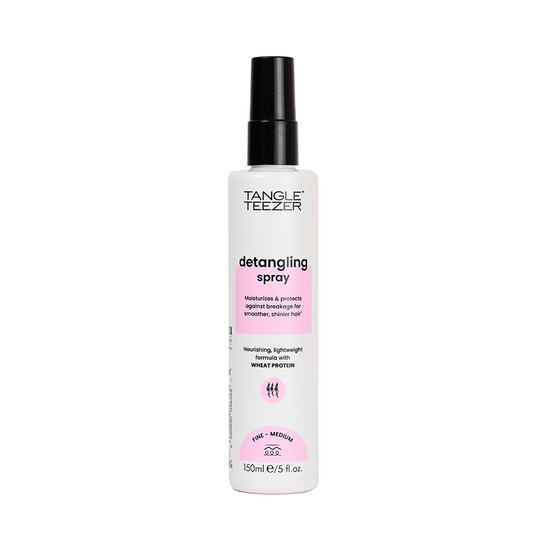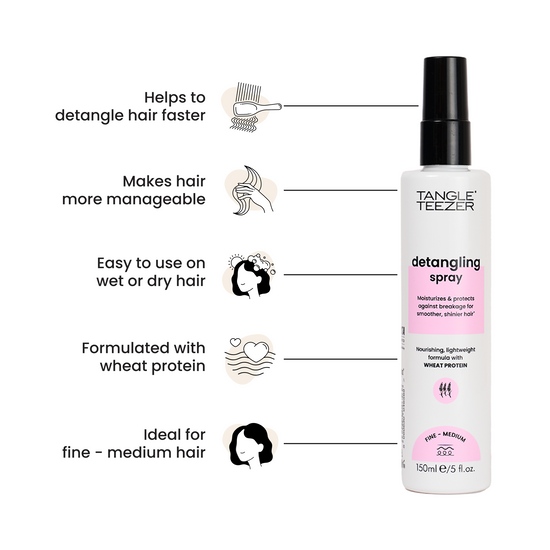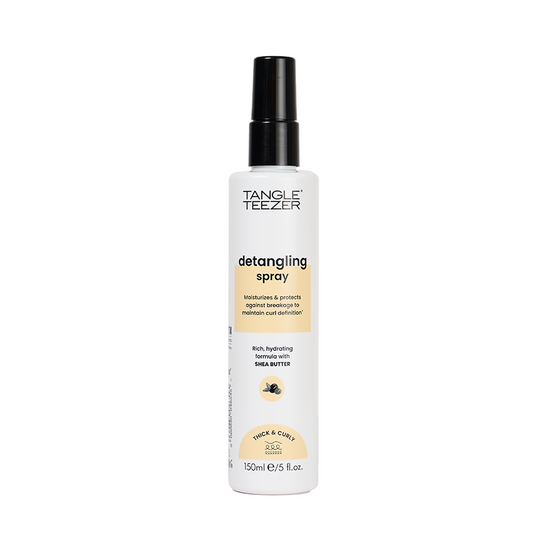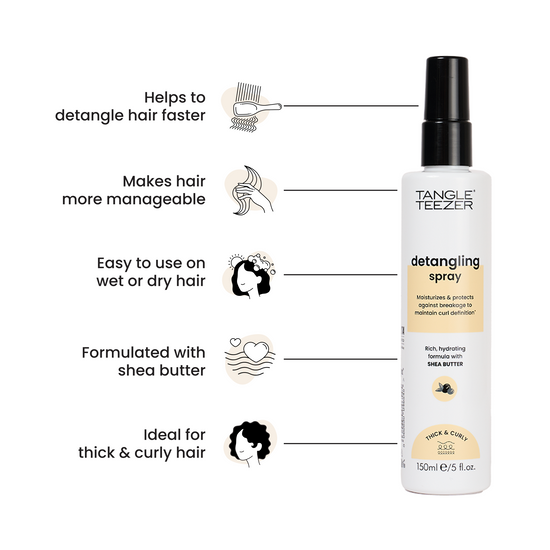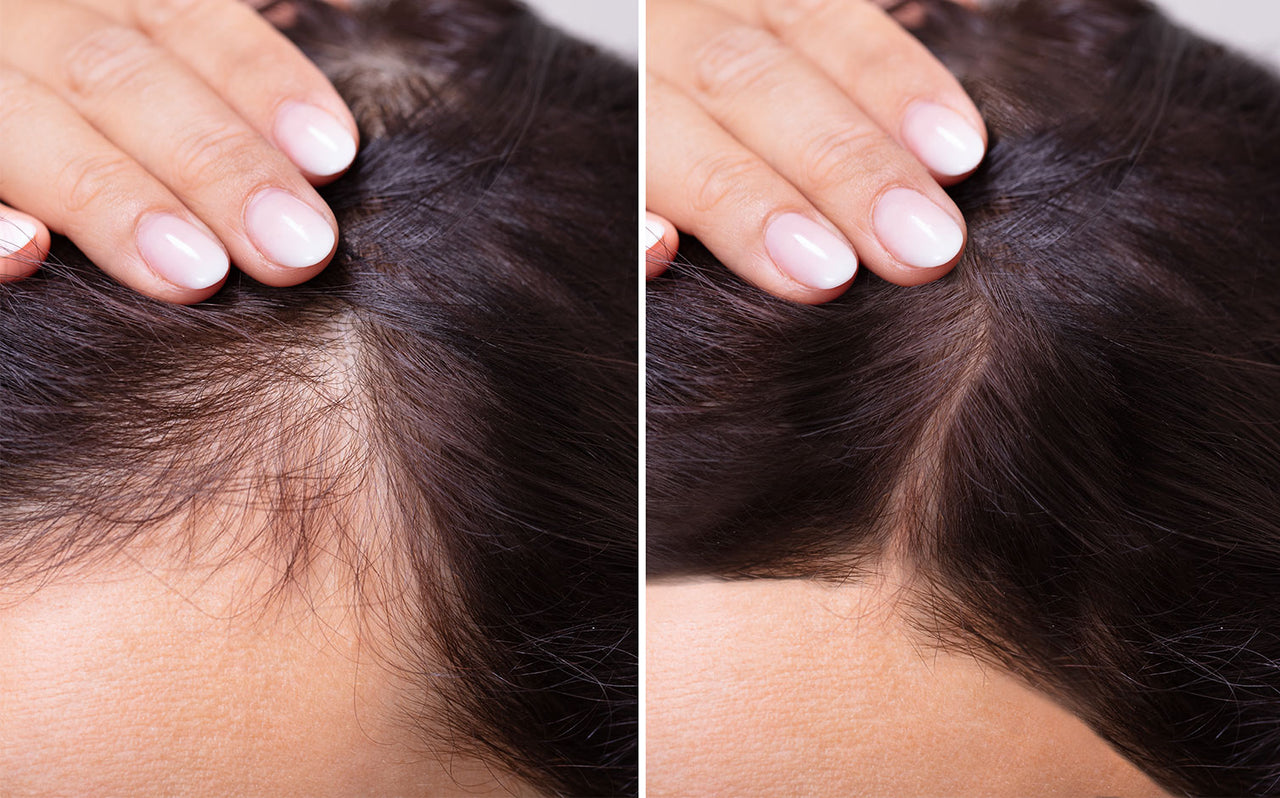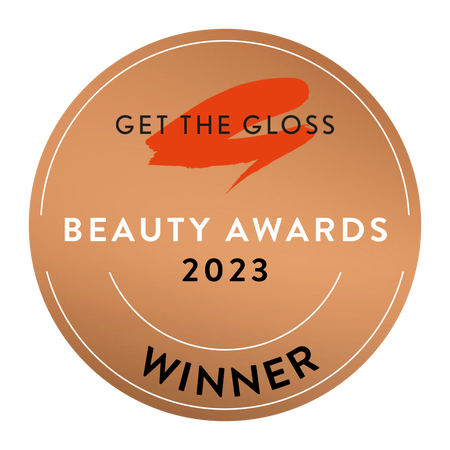GETTING TO THE ROOT OF HAIR LOSS AND THINNING
There’s little doubt that hair thinning, shedding and loss makes you feel self-conscious, and let’s be frank, miserable as a sufferer. Female hair loss, categorised by the Ludwig Classification, impacts hair volume and appearance, adding to the distress. Female pattern hair loss, assessed through the Ludwig Classification, often has emotional and psychological consequences that differ from male pattern baldness. For a condition that was once a taboo subject, the problem is now being freely talked about. Here we highlight some of the underlying conditions and how a Tangle Teezer hairbrush can help.
THE ALL-IMPORTANT HAIR CUTICLE
Getting back to basics, it's important to acknowledge the leading role the cuticle plays. Here's a quick at-a-glance guide:
- The hair shaft consists of many layers, but it's the cuticle that acts as the first line of defence and most affected by cosmetic treatments.
- Think of it as an armour-plated rope.
- These cells provide protection, giving strength to the hair. They work to prevent damage to the hair's inner structure as well as helping control water content.
- Each cell of the cuticle overlaps – much like a tiled roof. When they are roughened light is naturally refracted instead of reflected, making the hair look dull and brittle.
- The cuticle is extremely sensitive to external factors. Excess heat, chemicals over zealous brushing can all damage the cuticle.
- The hair receives much wanted shine from flat laying cuticle cells.
WHY HAIR IS SO FEEL-GOOD?
Okay, this may sound like a trick question, but hair is deeply psychological. Not only does it act as a thermal coating – we have 1,400,00 hair follicles and 120,000 of those are on the top of our head, but it’s socially important too.
Good hair is a sign of health, vitality and strength. Let’s face it, hair is one of the first things you notice about people. When hair loss or thinning happens, it affects us greatly. We feel less youthful, less attractive and less sexual. The life cycle of hair, including the anagen phase, plays a crucial role in hair growth. Ultimately, the effects of hair loss are devasting. It robs confidence, femininity and in some cases identity.

Treatments like minoxidil are specifically aimed at stimulating hair growth and addressing common types of hair loss.
CAUSES OF HAIR LOSS INCLUDING FEMALE PATTERN BALDNESS
Now, here’s the thing. For hair to look thinner it needs to be 60% less. For hair to feel thinner it needs to be 30% less. Therefore, we start worrying about hair loss before it visibly starts noticing just from the thickness of it.
Hereditary hair loss is a common cause of baldness, particularly related to ageing, and it can affect both men and women. Female pattern baldness, a type of genetic hair loss, is also prevalent and, like male-pattern baldness, is not preventable.
There are many reasons for hair loss – 1 in 3 women will suffer from a diffuse shedding at some point in their lives. Apart from genetic sensitivity, hair loss is usually a side effect of an underlying condition. Your first point of call for any worrying hair loss or thinning would be to consult a doctor or a trichologist where symptoms may include:
- Nutritional deficiency. Diet is very important for healthy hair and low iron levels can contribute to hair thinning.
- Ageing. Hair naturally thins as we age. The cells which replicate to make hair become slower over time.
- Stress or trauma. This is known as shock hair loss and can be caused by an emotional, physical or psychological trauma. It normally rectifies itself in 4 to 6 months.
- Hormones. Many women find hair density can change when taking the contraceptive pill or during the peri-menopause and menopause.
- Medications and illness

Treatment for hair loss often includes medications like minoxidil, anti-androgens, and iron supplements, which can help manage thinning hair.
There are various types of hair loss, including genetic causes and conditions like alopecia, with some being permanent and others temporary.
STYLING PRACTISES TO STIMULATE HAIR GROWTH FOR THINNING HAIR
When hair starts thinning, people are often frightened of brushing or styling it in case it falls out even more. Further hair loss can be aggravated through mechanical trauma. This means damage caused by aggressors such as heated tools such as straighteners and tongs and harsh colouring treatments. Medications like minoxidil are an effective hair loss treatment for women, stimulating hair growth and managing thinning. Here are ways you can treat and style your hair with plenty of TLC from the Tangle Teezer range of hairbrushes:
Hair transplant procedures, using modern techniques like follicular unit transplantation, offer another solution with varying success rates depending on candidacy.
The wrong hairbrush can increase friction by weakening and splitting the hair cuticle. Brushing with our Fine & Fragile detangling hairbrush detangles with no pulling or tugging of the hair thanks to soft-flex teeth. The teeth are 30% softer than The Original and makes for a kinder hair experience, as well as being gentle on the scalp.
It's normal to lose hair daily, but excessive shedding can indicate underlying issues. A spot of backcombing on and around the crown can work hair wonders in giving the illusion of thicker hair. Our Ultimate Volumizer with two-tiered teeth gently compacts the hair instead of matting and ratting. It’s easy to brush out afterwards.
A receding hairline can affect both men and women, and seeking medical advice is crucial for persistent hair loss.
Finally, when blow-drying use our Ultimate Blow-Dry. It’s super easy to use, and gently lifts and blow-dries the hair with no tugging or pulling of the hair thanks to the innovative teeth technology.
To treat hair loss, scientific evidence supports the effectiveness of certain medications and treatments, though they may have limitations and side effects.

To learn more, you can find an interview with trichologist Iain Sallis here
